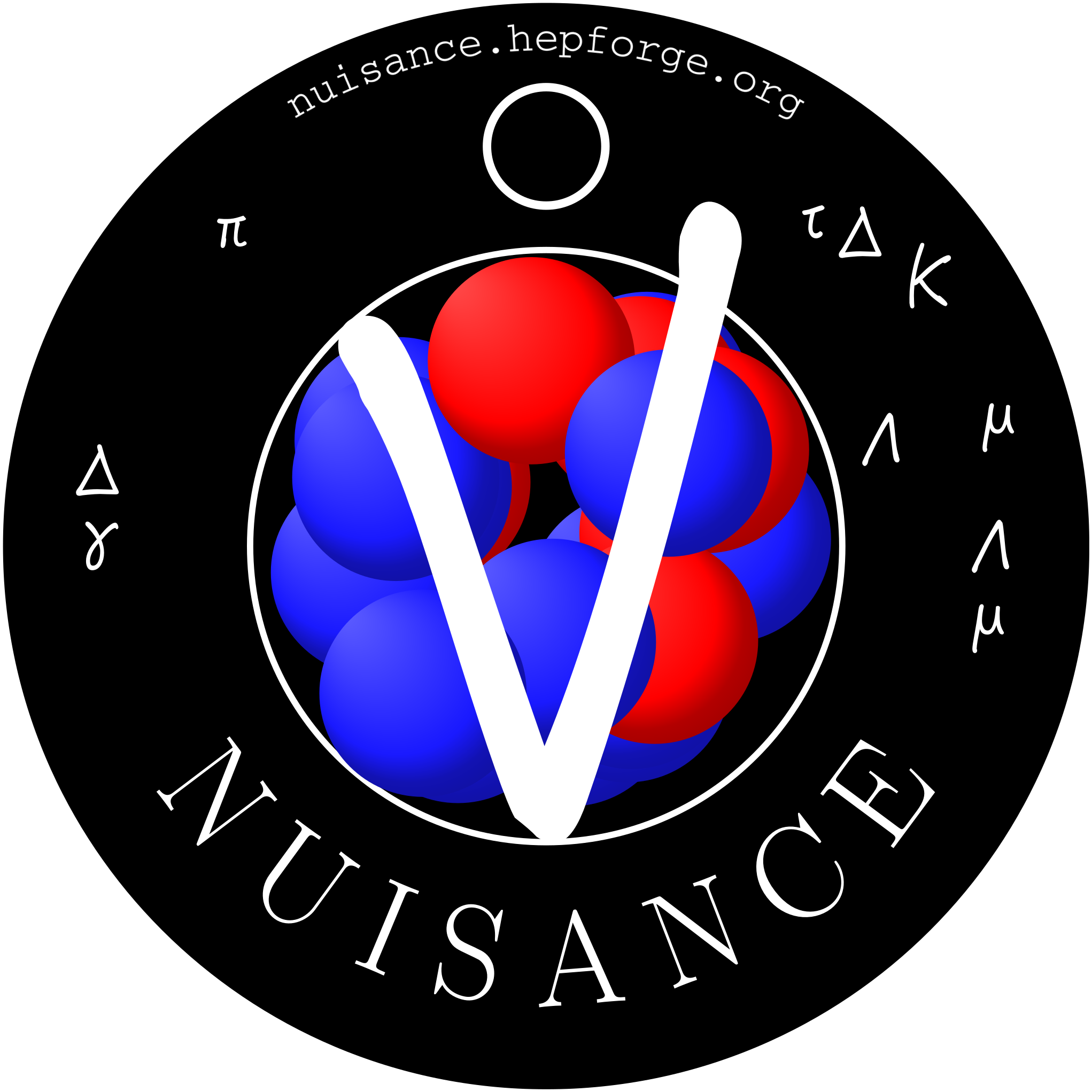
Flat trees in NUISANCENUISANCE has the ability to convert generated events into useful input-agnostic flat-trees. Using this, you can generate events with GENIE, NuWro, NEUT and GiBUU and use the same simple We also gave a tutorial on this at the Pittsburgh Tensions workshop in 2019, which you can find here. You can generate your own flat-trees using the Output branches in flat treeTo print the branches, simply do Most flat-tree branches are straightforwardly named, e.g. Event characteristicsCharacterists such as Q2, W, Enu are all available in the trees. Particle informationParticle information is also available in the Signal definitionsYou can use signal definitions to draw events that would only pass certain selections. You can either make your own using the particle information provided in the flat-trees and outlined above, or you can use our pre-calculated ones. The signal definition flags are all prepended by Scaling to a cross-sectionNUISANCE also provide the Weighting the distributionYou can also evaluate the effect of systematics on the distributions by including reweighting engines in NUISANCE and load the parameters in a config file. You provide the config file by The format of parameters is the usual in NUISANCE which you can find details of in a different tutorial. In a nutshell, you do <nuisance>
<parameter name="MaCCQE" nominal="1.5" type="genie_parameter"/>
</nuisance>
where the Source code for the curious hackerThe code used to make flat-trees is very simple, and just defines variables and methods to get them, as you might expect. All is done in the |